Kyoto: A Buddhist View (Part 4)
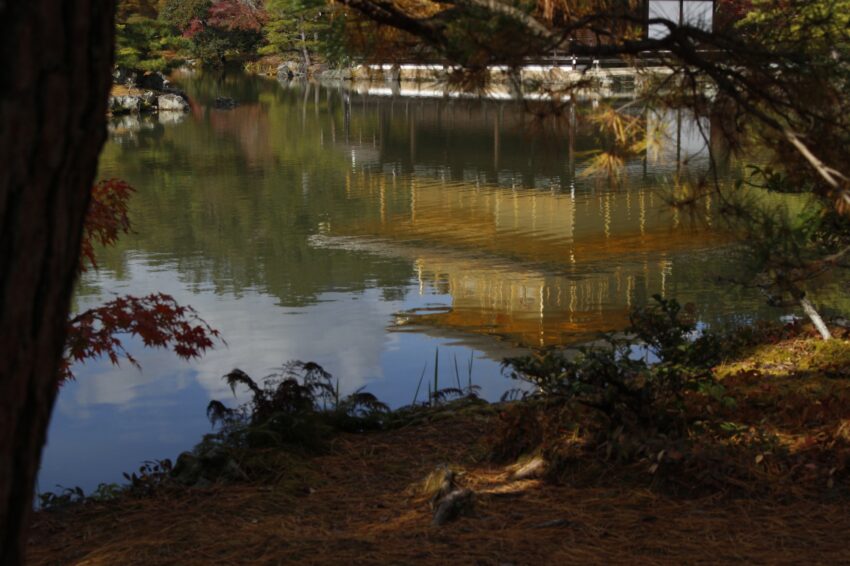
Top Photo: MSY000028さん on PhotoAC
It’s been an informative journey, but all good things must come to an end. We conclude with author Nicholas Lemon’s travelogue of popular sites in Kyoto, with an emphasis on their history as related to Buddhism.
Reflections
Kiyomizu-dera temple was my first actual temple visit in Japan. I did have a short shrine visit ten years prior in Tokyo, but May 19th 2016 was the day I first stepped foot on a Buddhist temple in Japan. I bashfully admit this is a point of nostalgia for me. I honestly didn’t know at the time how fortunate I was to stay at a Higashiyama hotel just a short uphill walk from the premise on Kiyomizu-mae (Kiyomizu’s access road).
That day I spoiled myself on some local confectionery, such as yatsuhashi (八ツ橋, which are glutinous rice flour pouches filled with fruit jam or sweet bean paste called anko). And I dined in a hole-in-the-wall sushi restaurant. I knew very little Japanese, but most of the people who greeted me were so polite, even though I’m sure I looked rather unusual to them at the time.
I think, if I had a chance to have another “first visit” in Kyoto, I don’t think I would change a thing about the location, nor the destination. I would have simply changed some of my own actions and been more adamant about studying practical Japanese conversation.
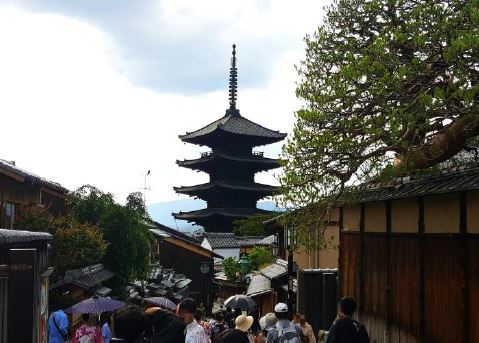
Photo: Ninenzaka, the historic thoroughfare in Higashiyama district leading to Kiyomizu-dera, (August 2019), Nicholas Lemon
For the longest time I avoided Rokuon-ji specifically because of the gold motif of the Kinkaku golden pavilion. But I eventually visited there for work with my tour company, and I learned a lot from that experience. I am still unmoved from my aversion towards gold, and the clearly contradictory issue it proposes as a Buddhist symbol, but I suppose it is understandable that keepers of the shariden, reliquary hall would want to designate it in this way.
The garden itself is a beautiful setting, and the pavilion is like something out of a fantasy novel. And despite the shariden having been a symbol of oppressive feudal power in the past, it now serves almost as a communal museum piece for even common people to view. In that sense, my demeanor towards the site changed completely.
And I suppose the most virtuous thing about Kinkaku-ji is that the site has brought commerce and plenty of joyful memories to so many people. And that, I think, is validation enough, for even the Buddha to be content with. In the spirit of muditā (a Pali word meaning “empathic joy”), I have been able to enjoy the site in the company of other people who found joy in their visit.
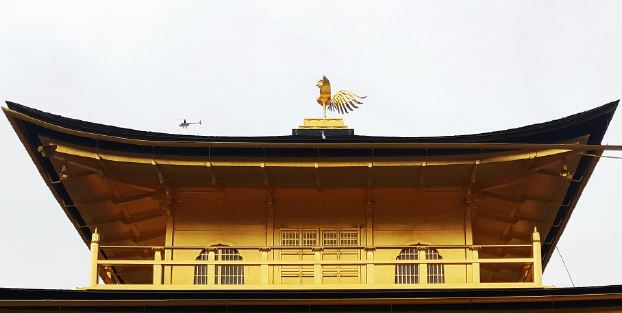
Photo: Detail of Kinkaku’s Hō-ō phoenix ornament at Rokuon-ji Temple with a cameo from a passing helicopter, (May 2018), Nicholas Lemon
At the very top of the Kinkaku is perched a Hō-ō ornament (鳳凰, from Chinese, fenghuang “golden phoenix”). Some sources say the mythical creature has symbolized the Japanese goddess of the Sun, Amaterasu. But here I think the Hō-ō is more connected with the Buddhist tradition extending from China, what with all of the architectural influences and affiliation with the Zen sect.
And in some sense this phoenix has been open to interpretation. For me the ornament is a triumphant declaration that the shariden has been resurrected, from war, poverty, and postwar depression- the site has become a site for people from around the world to come and establish new memories.
I have visited Rokuon-ji several times since living in Japan, and I have been delighted to hear Mandarin, Korean, Swedish, German, French, Portuguese, Spanish, Dutch, and many other languages spoken there. Sadly, the pandemic has halted frequent travel for the time-being.
But I am optimistic that, like the Kinkaku pavilion, the whole world might be restored, and bolstered further still, and will rise from the ashes fully converted from a state of exclusivity into one of plurality and inclusivity.
☸
Thank you for joining us these past few weeks for a different sort of look at Kyoto. We hope you’ll continue to enjoy twice-a-week articles here on MUSUBI throughout the rest of 2023!
Photo Credits:
Top Photo: MSY000028さん on PhotoAC
Additional images provided by the original author (Nicholas Lemon), used with permission
All other content (text) created by the original author and © 2023 MUSUBI by Borderlink
RELATED
-
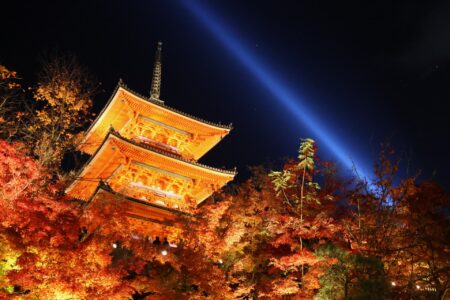
Kyoto: A Buddhist View (Part 1)
Top Photo: LeonardoYasuさん on PhotoAC Over the next week, join author Nicholas Lemon for an insightful and uniq… -
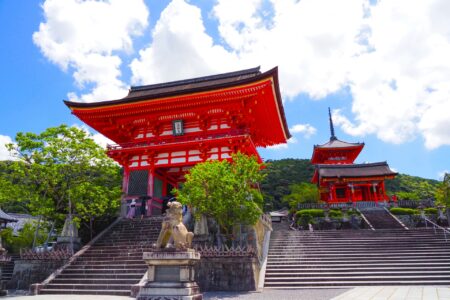
Kyoto: A Buddhist View (Part 2)
Top Photo: photoBさん on PhotoAC We continue with author Nicholas Lemon’s travelogue of popular sites in K… -
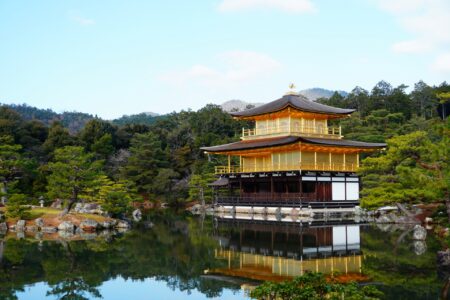
Kyoto: A Buddhist View (Part 3)
Top Photo: nkm03さん on PhotoAC We continue with author Nicholas Lemon’s travelogue of popular sites in Ky…
PEOPLE

Nicholas Lemon
From the USA
He has lived in Japan since 2016 as a full-time teacher, graduate student, and part-time tour guide in Kyoto for two years


